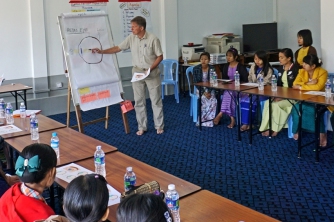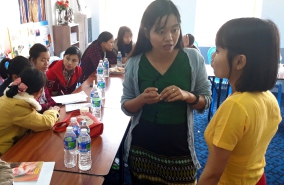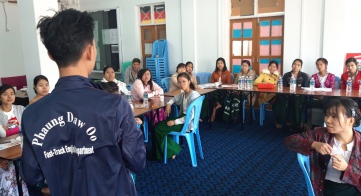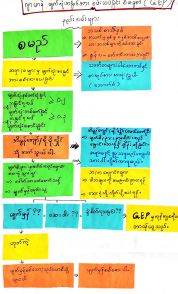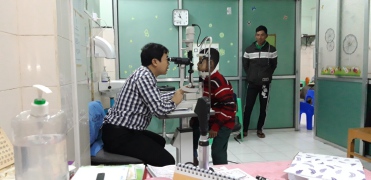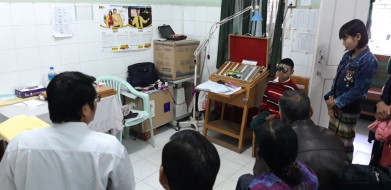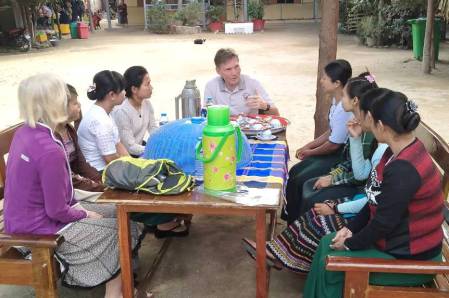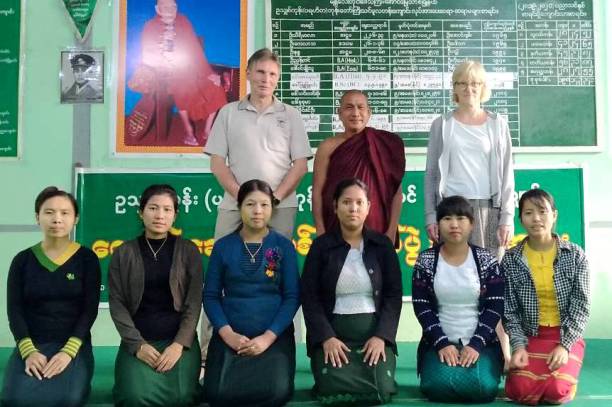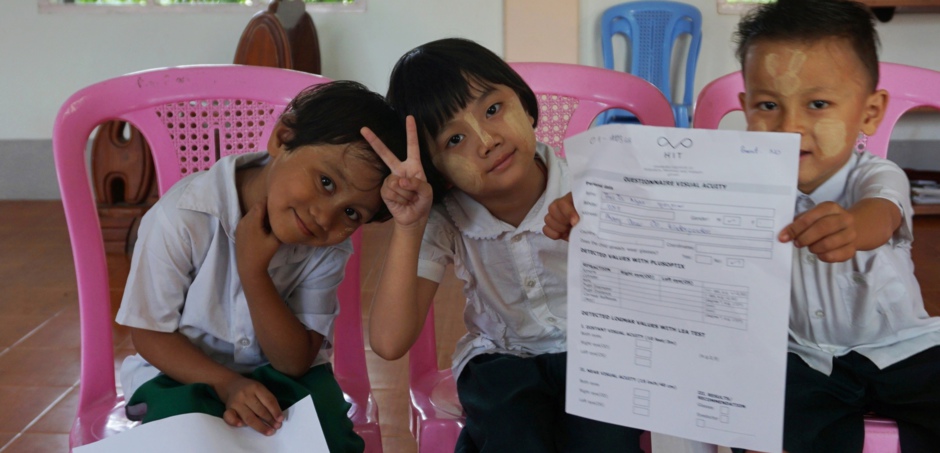

Blogs from Mandalay 2020
Conference for the Health of the Children
The project time of five weeks is coming to an end. 500 children have now been examined - a number that could only be achieved with the active help of the teachers. The first two project goals - eye tests on all 5 - 8 year old children and the training of the teachers - could be achieved almost effortlessly, because the eye project was warmly welcomed in all schools and we were always well supported.
It was much more difficult to achieve the third project goal: not only to ensure sustainability through the continuation of eye examinations by the teachers, but also to win over ophthalmologists and opticians who share our preventive approach and enable children with eye problems to receive appropriate therapy. By cooperation with Dr. Tin Mg Thant from MEENT Hospital we found a very good partner.
An important item on the program was the presentation of the process chain "From the examination to the glasses", which was presented and discussed in detail. Here the two project assistants Moet Moet Hlaing and Ei Mon Kyaw from the PDO office have taken on an important task. You will closely monitoring the future eye examinations, which start in June at the beginning of the next school year, and also coordinate visits to the MEENT Hospital and glasses, medicine and possibly surgery appointments with the individual schools. All costs are taken by "German Eyesight Project (GEP)" - that is the new official project name - and managed together with Foerderverein and the PDO.
In the second part of the conference, a group work was on the program, in which the teachers of the different schools discussed and answered questions about the eye tests together. Fears of a lack of discussion were turned into the opposite: the lively discussions provided a good opportunity for everyone to get to know and exchange ideas. After the individual groups had presented their results, each school received the “examination box” with LEA catd and LEX symbols book and a detailed manual.
At the end everyone gathered for the obligatory group picture - and then it was time to say goodbye: from the project, from the friendly and helpful teachers and ultimately from our two great project assistants, who continued our work until our next visit to Mandalay hopefully will continue successfully.
Cooperation with MEENT-Hospital
In the meantime over 300 children have been examined - apart from the PDO and three small schools in Mingun, two other schools in Mandalay and a school in Kyaukse, around 45 km away. We were warmly welcomed and supported everywhere. We were able to train four teachers at all schools (even four teachers at the PDO plus two nurses from the PDO eye clinic and two PDO office staff) and made them so familiar with the eye tests that they can carry out them in the future without further instructions.
Statistically - and so it is in Myanmar - around 3 to 5 percent of children have eye problems. These are not always short-sighted or far-sighted, but there are also inflammations, malnutrition and eye injuries. And that's why glasses are not always the right support. Treatment can also include eye surgery.
In our experience, poor eyesight of children is only treated here if the eyesight is below 50 percent. Preventive measures, for example to treat childish squinting at an early stage, are also neglected in view of the general poor supply situation. We are therefore very happy to have found in the pediatric department of the MEENT-Hospital Mandalay (Mandalay Eye Ear Nose Throat Hospital) an institution that shares a preventive approach and wants to actively support our project. Specifically, this means that we the children of the eye project to the ophthalmological director of the eye clinic, Dr. Tin Mg Thant, for further diagnosis and treatment.
In the remaining weeks, in addition to further examinations and training, we will now build a way so that the eye project - from the examinations by the teachers to the treatment of poor eyesight - will continue regardless of our presence on site. For this it will u. a. At the end of January give a meeting with the teachers of all schools concerned at the PDO to build up a network and to hand over the examination materials.
Teacher as an Testing Team
The PDO was still closed in the first days of January, so the German Eyesight Project (GEP) started on December 30th at Own Shit Kone School, a monastic primary school in western Mandalay. It was a warm reunion with the principal U NandaMalar and the teachers of the small school near the Irrawaddy, which was visited as a PDO partner school in 2017/18.
The new concept by Sabine Bräuer and Thomas Kosinski from Hamburg provides not only examining the children of the monastery for their eyesight and providing them with glasses if necessary: the school's teachers are also instructed in the examination practice so that they can continue their eye examinations afterwards to be able to.
In the second step, the three teachers and our new project assistant Ei Mon Kyaw were explained and demonstrated the examination procedure and its background. In the first part of the practice, the teachers first examined each other and then - under supervision - the monastery children between the ages of 5 and 8 years.
The children's ability to read and long-distance vision are checked using two different tests. All children with vision problems will be introduced to Dr Tin Maung Thant of MEENT Hospitalin the coming week and will be examined again by him. Children who need glasses are then provided with glasses by the optician, the costs are taken by the project.
Helfen Sie mit! Unterstützen Sie unser Projekt mit Ihrer Spende

